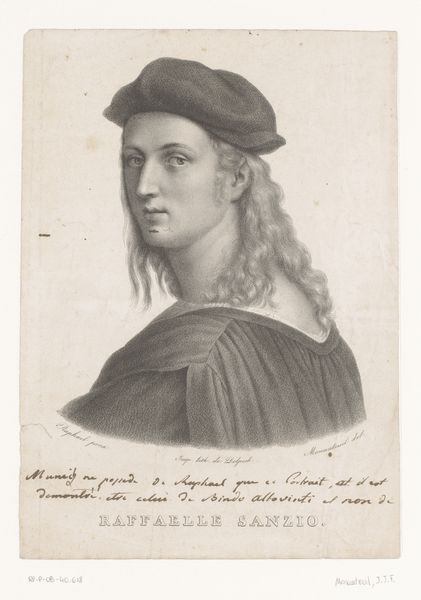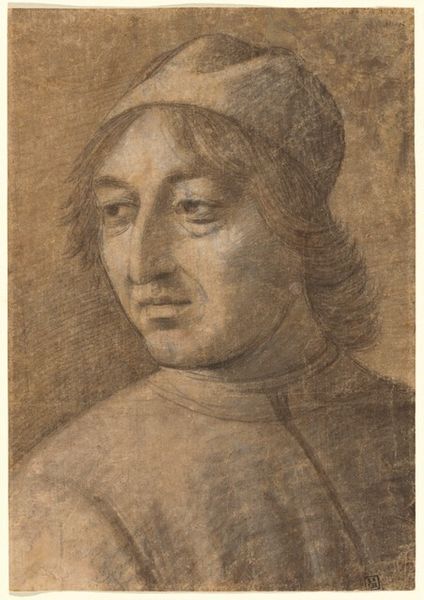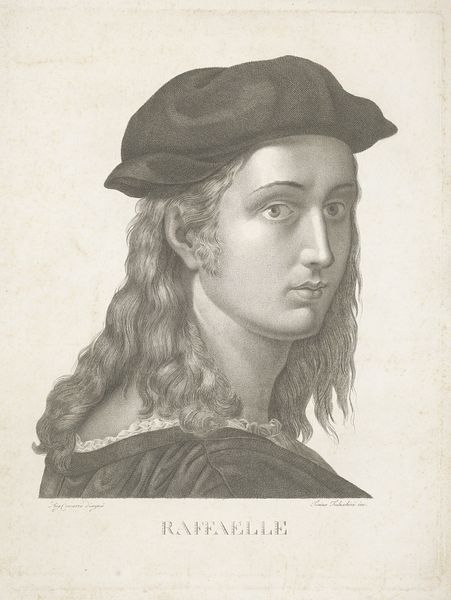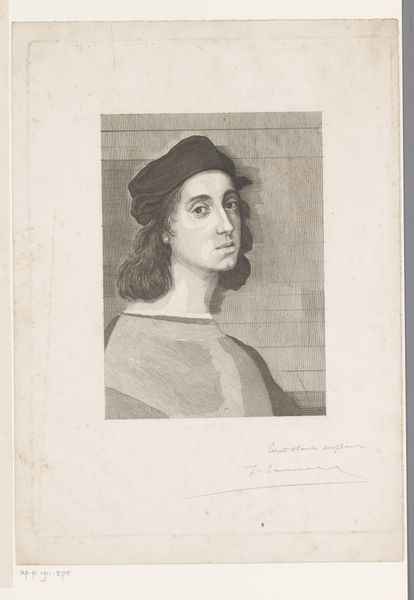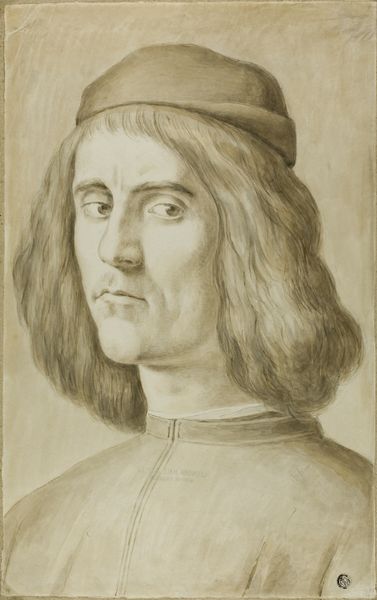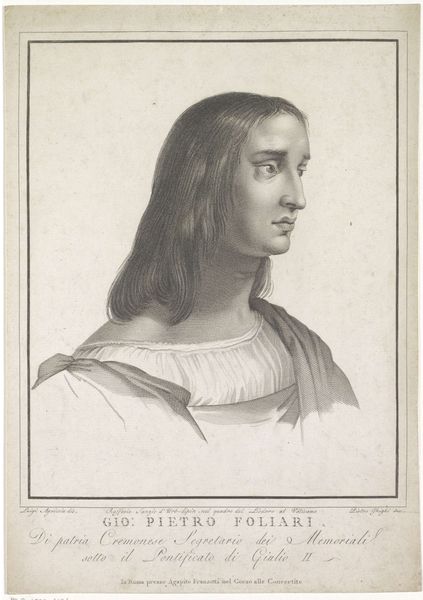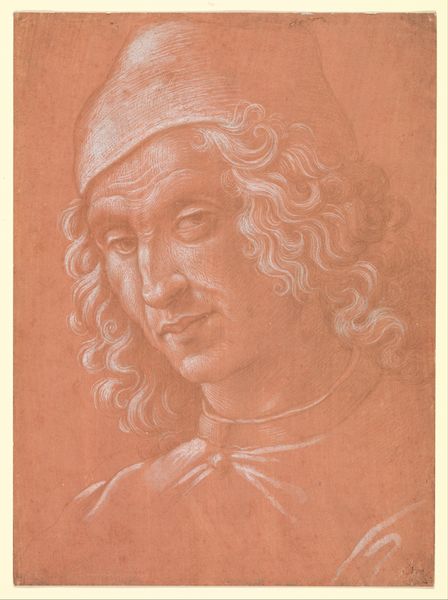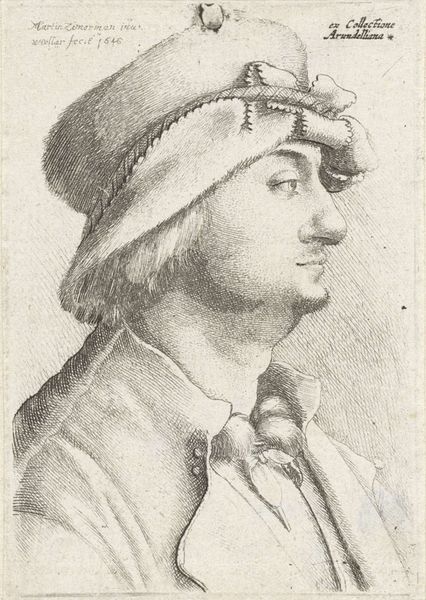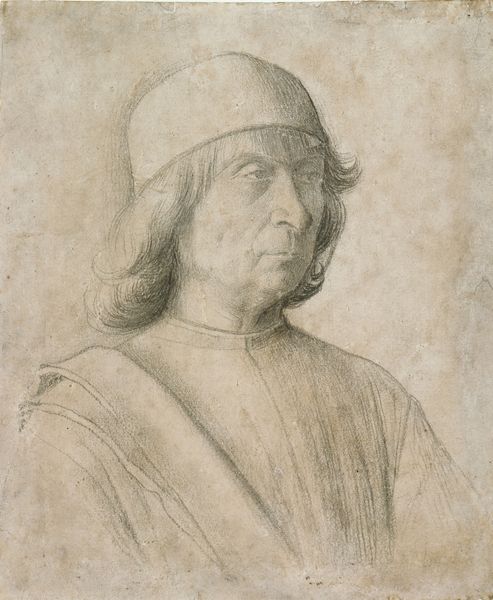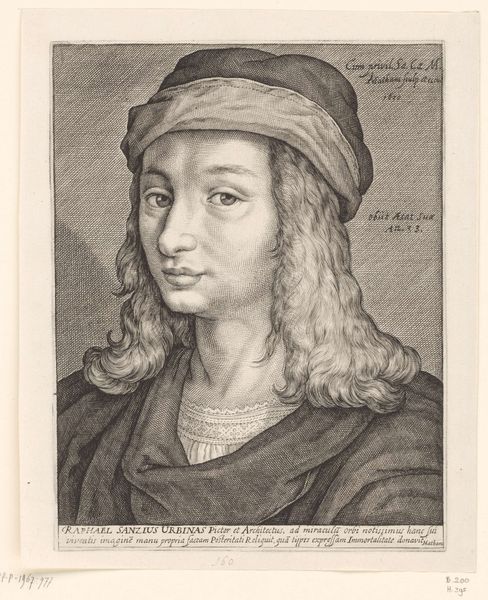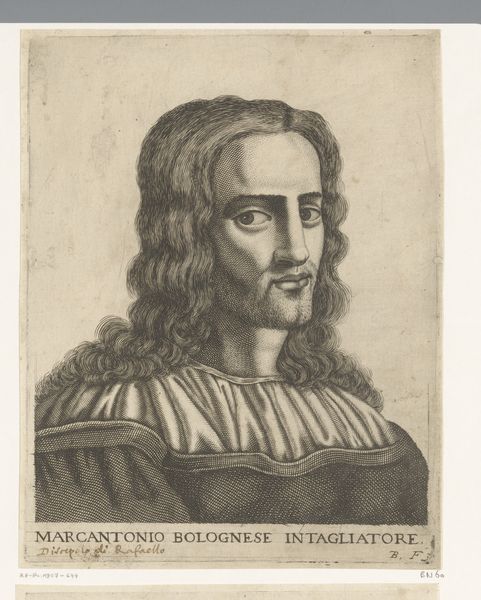
drawing, engraving
#
portrait
#
drawing
#
baroque
#
caricature
#
figuration
#
portrait reference
#
pencil drawing
#
line
#
portrait drawing
#
engraving
Dimensions: height 161 mm, width 112 mm
Copyright: Rijks Museum: Open Domain
Curator: Looking at this engraving, attributed to Monogrammist LC from around the 18th century, titled *Portret van kunstenaar Rafaël,* I'm struck by the clarity of the lines. It's a study in portraiture, clearly influenced by Baroque sensibilities, though distilled into a somewhat austere representation of the artist. Editor: The austerity is the first thing that hits me, too. The rendering of the subject – Raphael, apparently – is curiously impassive, considering his celebrated status. It feels almost like a flattened mask, despite the shading. Curator: Indeed, the lack of expressive dynamism could speak to the demands placed on artists for representation in this period, specifically to connect them with recognized master like Raphael. What elements in the depiction might have functioned to establish lineage for other artist or workshops? Editor: Good point. The hat and the soft waves of hair certainly conjure up familiar images. And, beyond the individual, such engravings helped build Raphael into an artistic ideal, furthering the idea of artistic genius as part of cultural heritage that needed promotion. But is this a faithful likeness? How complicit was it in shaping his myth? Curator: I wonder, also, what resonance Raphael’s image held during the Baroque period? Did this portrait also carry then implicit moral messaging tied to craft and excellence? After all, artists such as Raphael came to be equated with virtuosity in that moment. I'm curious about that signature “LC," the work has now become removed from its place, but it was very significant for the art world when Raphael's drawings and paintings influenced artists everywhere. Editor: Definitely. Think of the market for such images! And consider that it's not just a portrait; it's a 'portrait of an artist'. What stories do these pieces tell to the wider audience, the collectors? Were they more concerned with showing status through collecting or were these objects meant to communicate an ideology about the sacred calling of Art? The drawing seems too humble for the former. Curator: It’s left me considering this interplay, how an image shifts and gains significance across centuries, embodying different needs for understanding legacy. It's fascinating to consider, especially with someone like Raphael, whose art became its own cultural force. Editor: And the dialogue continues as the object evolves and shifts.
Comments
No comments
Be the first to comment and join the conversation on the ultimate creative platform.

